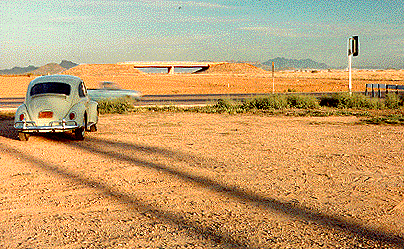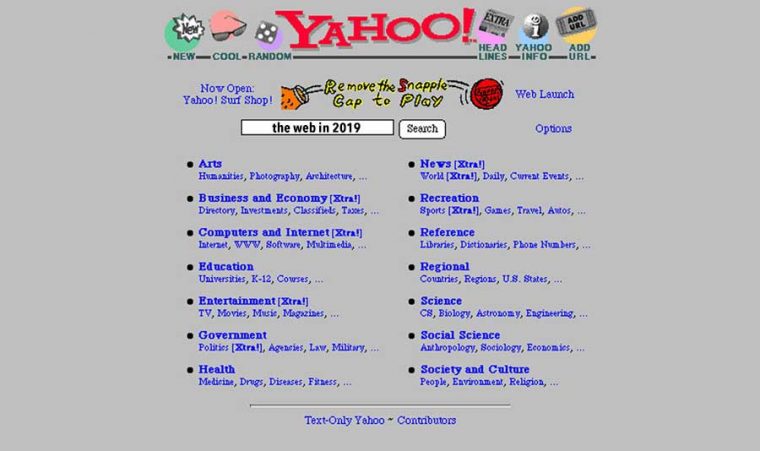Some colleagues are pegging one of the best blogging genres, blogging about blogging or writing about writing. Kate Bowles started a wave with lamenting the weight work related writing, Martin Weller cues the Fab Four , Alyson Indrus is focused on writing writing, and while it’s more indirect, D’Arcy Norman’s observation of Apocalyptic Chic is another call to Get Back to the Blog.
When the ideas are sputtering, though (well there are un written drafts in my head), there’s always one reliable target… the past.
This came directly into my RSS inbox (sort of a retro joke there) in another installment of Jay Hoffman’s History of the Web project (check out the timeline too), with 1995 Was The Most Important Year For The Web.
There’s numbers to support that 1995 was a web inflection point, the drastic 180º turn of Microsoft when Uncle Bill’s early dismissal of the web became a “Let’s Dominate It”, but Jay dives deeper:
So what happened? What made Microsoft, the most dominant force in the technological landscape, suddenly scared of a threat they had barely registered just a year earlier. What made online service providers, major media publications, large government organizations and everyday people sit up, take notice, and open up their web browsers? 1995 is the story of the many people that believed in the web and fought for its future. It was the year it moved outside the huddled spaces of universities and research labs and into the imaginations of everyday people who imbued it with purpose and set it loose on to the world.
As is often the case, the story of 1995 doesn’t start in 1995. It starts a few years earlier, when the seeds of the consumer web first took root. Which is, as you might imagine, where we will begin as well.
You get the interactions of two different forces of the web’s early climate, the WWW Wizards gathering at some outfit called “O’Reilly” with the Web’s daddy meeting up with the graphical browser wunderkid. There’s a lot more, like the two stanford computer science geeks who felt like they should organize the web. Did they?
More than that I was there, or had been for already two years. In late 1995 I was using this web based slide deck (hand coded HTML all the way) to talk about the web, though still hedging some bets, maybe, by referring to the other bits of the internet that had earlier promise:

I thought it was clever to put Al Gore’s glimmering vision of a “Information Superhighway” next to a highway I saw being built near Scottsdale. Well now it is the Loop 101, but in 1995 there were simply overpasses over non-existing roads in the desert.

Hoffman writes about the home-spun flavor of the 1995 web:
It’s not necessarily easy to create a website. It requires, at the bare minimum, a knowledge of the HTML markup language, and the ability to host these HTML files in such a way that they can be read by web browsers. It takes a bit of work. But anyone with the tools and some time can do it. In 1995, the web was flooded with new websites. Remember, there were hundreds going up every day. Some of these were large commercial endeavors. Others were the creative brainchildren of wildly unique creators like Jamie Levy. Most of them were built by ordinary people. They were basic and loosely connected and sometimes about TV shows or movies or nothing at all. Maybe even you built one of these.
https://thehistoryoftheweb.com/complete-history/1995-was-the-most-important-year-for-the-web/
I did! More than one.
The Internet Archive Wayback Machine (bless the Archive/support the archive) has an impressive amount of my own web history, though it’s first grab was in 1996.

In all of it’s stark HTML table font-tag infested layout, here was my web pile of 1996:

I had some vision about revisiting these old sites, but (yawn there goes the last reader), and much I had forgotten. In the mix are things I was trying to do to help others create web content, my efforts to get all of the information about our center and it’s projects, reports with versions all available in web content.
With the aid of my first student programmer Kurt, we had several resource sites where content was added via forms, crawled/indexed and made searchable. That was too it’s downfile, as this was all done with the “database” being a flat text world writable file that perl scripts would would add information too. That’s why the IT department took everything offline in 2015, parts of it were a security swamp hole that I never considered in 1995 (as much as having my work email address on every single page). That’s the price of the web taking off.
Since there was little awareness much less oversight of web page content, I could get away with my [so-called] clever footer sarcasm.
“There are three kinds of lies– lies, damn lies, and [server] statistics
— paraphrased from Mark Twain (1835-1910)[Server] Statistics are like lampposts: they are good to lean on, but they don’t shed much light.
— paraphrased from Robert Storm-Petersen (1882-1946)
~~~
legally said, “these pages are not an official publication of the maricopa community college district. we are not responsible for information reached through a link displayed here. our content may be used only with written permission.”
~~~
stylistically boasted, “we do not make much noise about it, but we do use features best viewed in a real browser or one of the wanna-bes. furthermore, this site is evolving not under construction”
If I will pick one thing out of the pile to hook into 1995, it’s my written piece for the MCLI Labyrinth, the technology side of an internal publication our office put out starting in 1992.
This in fact was an early impetus in 1993 to learn HTML. We wrote the Labyrinth aimed at publication for print, sent out by campus mail and maybe just announced via text based VAX email. At the time I was looking for ways to electronically distributing it; I had done text only versions on a gopher server I first experimented with (running on a Mac II). I was making plans to make versions in HyperCard for Mac users and then an exported version finagled into Toolbook, all sitting on a file server anyone in the district could connect to.
It was way too much work.
Then in October 1993 a colleague named Jim Walters handed me that floppy disk labeled Mosaic, and soon after finding the NCSA HTML Tutorial as well as MacHTTP server software I could plug into the network and run a web server, I tossed all that approach aside for HTML publishing.
Thus here is my “I was here and making on the web in 1995” proof.

I spotted those guys from Stanford:
Yahoo from Stanford University is a great starting points Not only is it comprehensive, fast, and up-to-date, but it is also searchable.
http://www.yahoo.com/
And even then, before I knew people there, CUNY was being innovative:
CUNY Multimedia Initiative is an incentive program to encourage faculty to experiment with the latest in multimedia technology.
(link goes to 1996 wayback machine archive, it’s worth reading!)
http://www.cuny.edu/multimedia/multimedia.html
And there was some organization named EduCom with an online magazine named EduCom Review at http://www.educom.edu/web/edreview.html (sadly, no shreds in the WayBack machine, sad face) I wonder if they will last?
That’s more than enough web nostalgia for today, maybe for a while. My ability to do this thought hinges well on the alchemy of the Internet Archive as well as my own wisdom to save my own copies of almost every web thing I made, letting me reclaim to my own domain what previous employers have slashed.
What’s next to write about?
Featured Image: Yahoo! Homepage in 1995 flickr photo by Yahoo Inc shared under a Creative Commons (BY) license modified to make wider image and adding text to the search box “<em>the web in 2019</em>“.



But you are going to revisit those old sites, aren’t you?
And reclaim them.